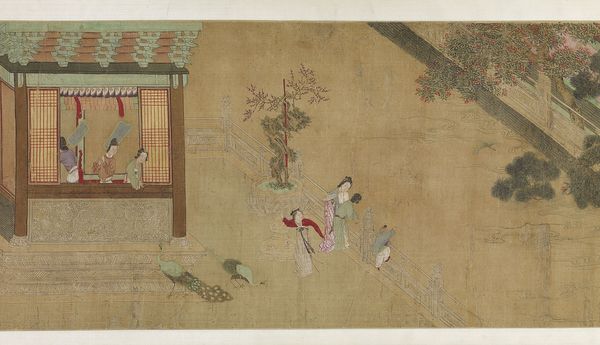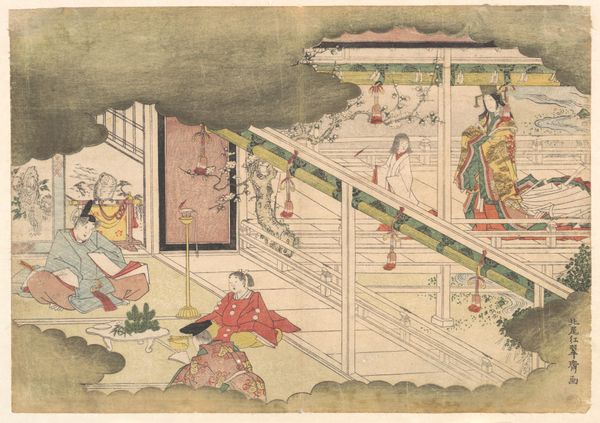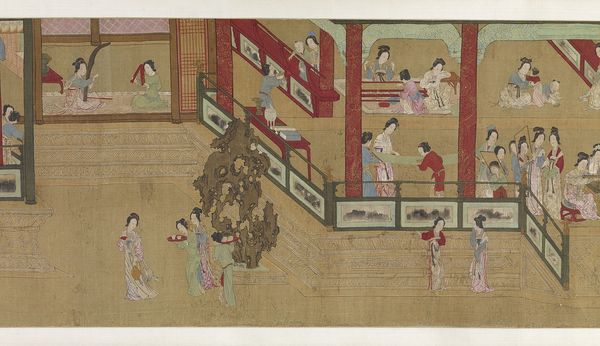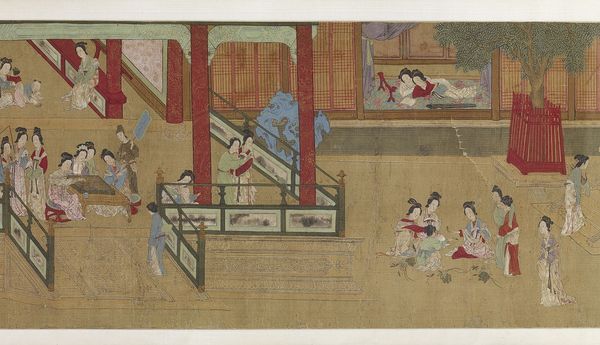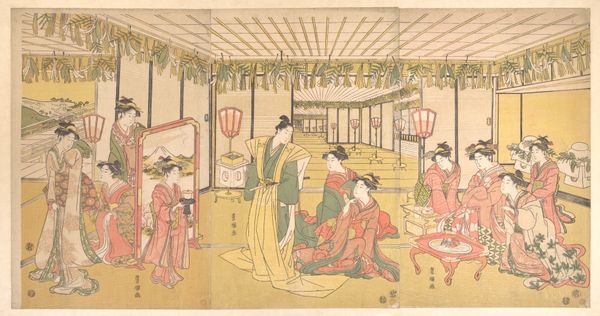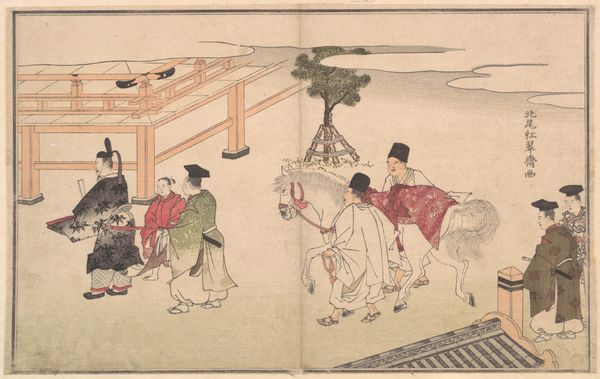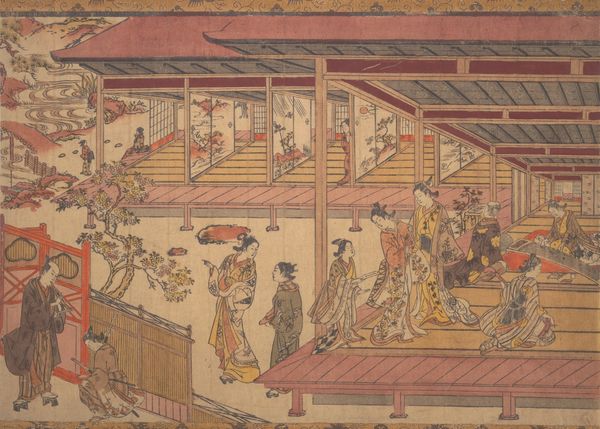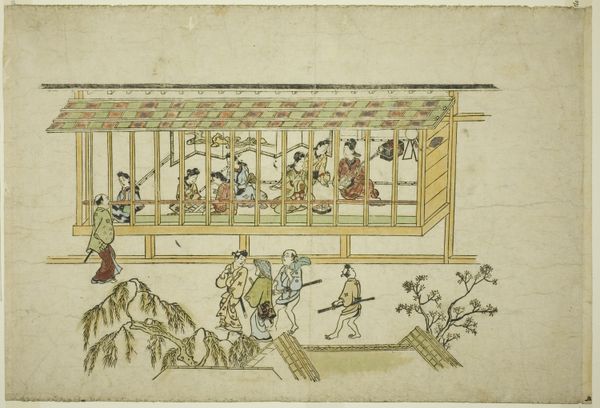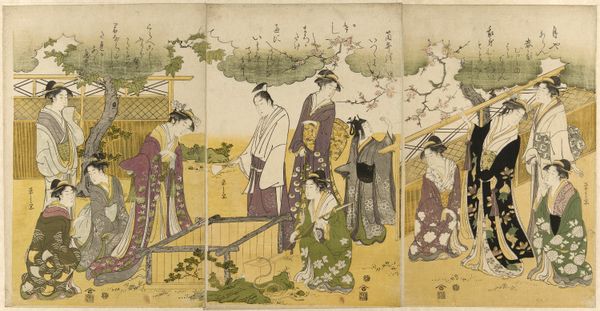
painting, watercolor
#
narrative-art
#
painting
#
asian-art
#
landscape
#
figuration
#
watercolor
#
genre-painting
Dimensions: Image: 13 5/8 × 54 15/16 in. (34.6 × 139.5 cm) Overall with mounting: 14 15/16 × 93 1/2 in. (38 × 237.5 cm) Overall with knobs: 16 5/16 × 93 1/2 in. (41.5 × 237.5 cm)
Copyright: Public Domain
Nonoyama Kōzan painted this view of a Kabuki theatre in the early 19th century. Dominating the scene are large circular motifs adorning the theater's facade, symbols deeply rooted in Japanese culture, often representing wheels of dharma, emblematic of Buddhist teachings and the cyclical nature of existence. These wheels, or similar circular patterns, resonate with motifs found across cultures. Think of mandalas in Tibetan Buddhism or even the rose windows of Gothic cathedrals, each symbolizing wholeness, the universe, and spiritual unity. Over time, the symbol evolves, carrying echoes of its original sacred meanings while adapting to new cultural contexts. One cannot ignore the psychological resonance of circular forms. Jung would certainly argue that they tap into our collective unconscious, evoking a sense of completion and eternity. This Kabuki scene, therefore, engages us on a profound level, reminding us of the timeless human quest for meaning and connection through art and performance. And so, the wheel turns, carrying its symbolic weight through time, appearing in new guises and continuing to stir our deepest emotions.
Comments
No comments
Be the first to comment and join the conversation on the ultimate creative platform.

